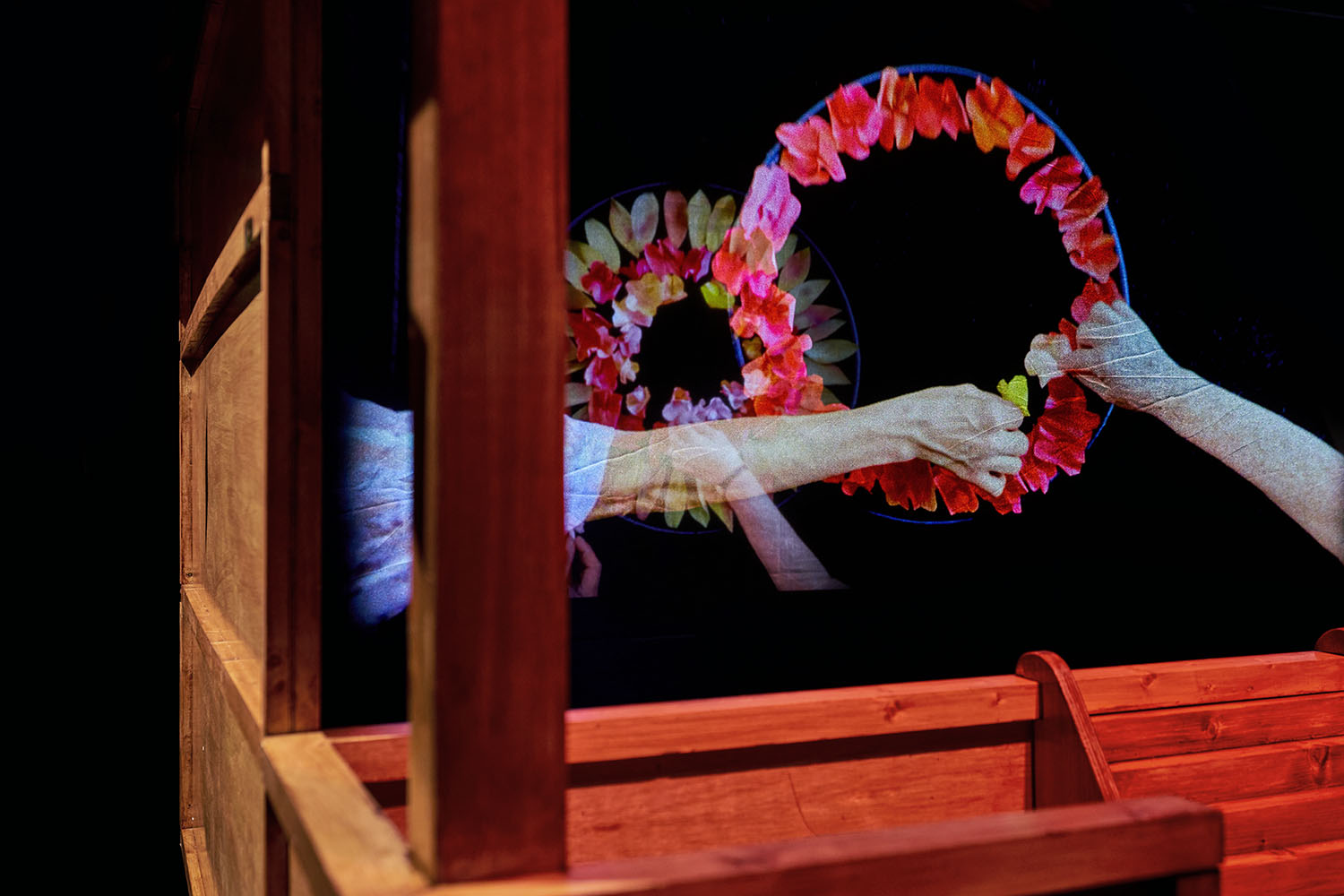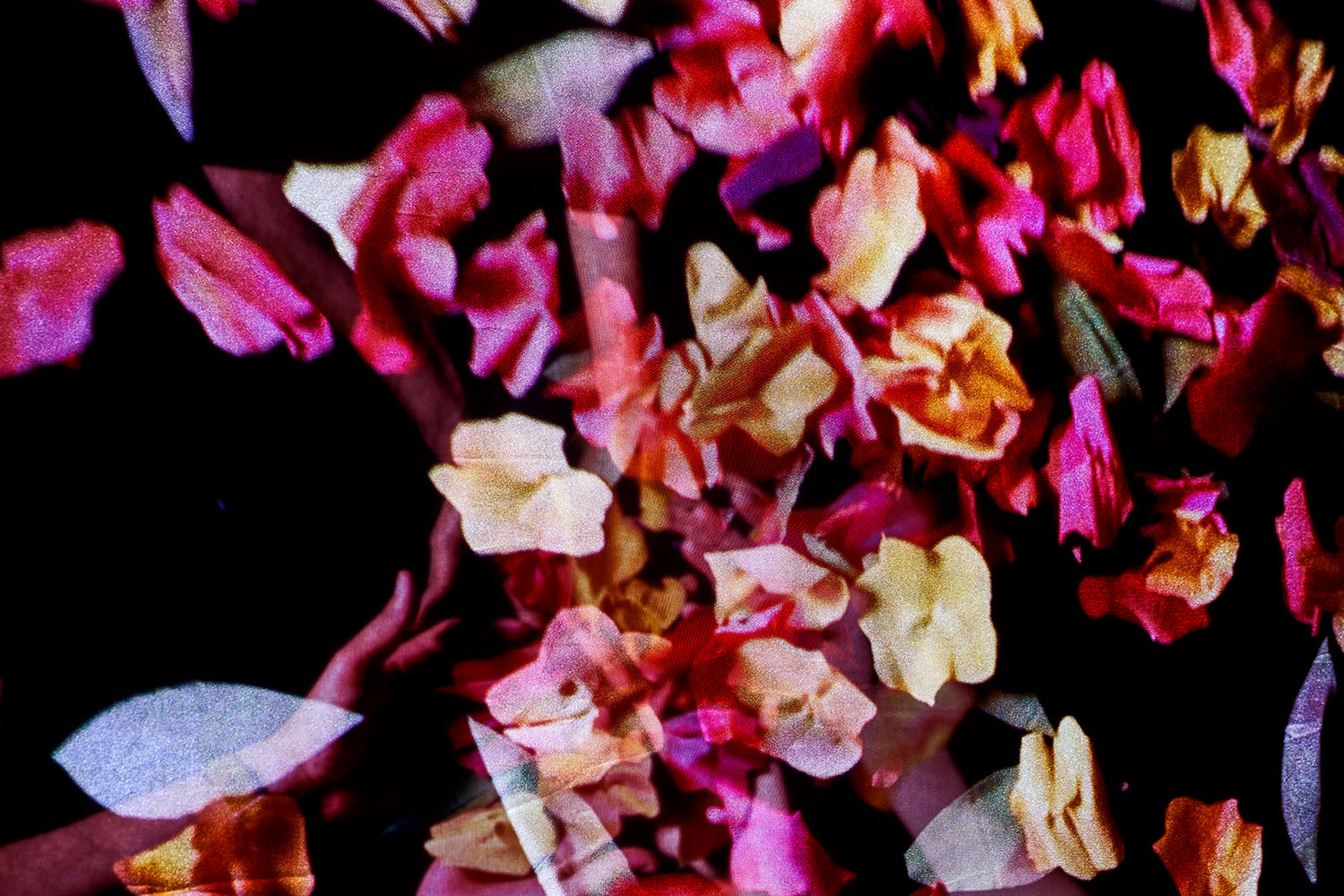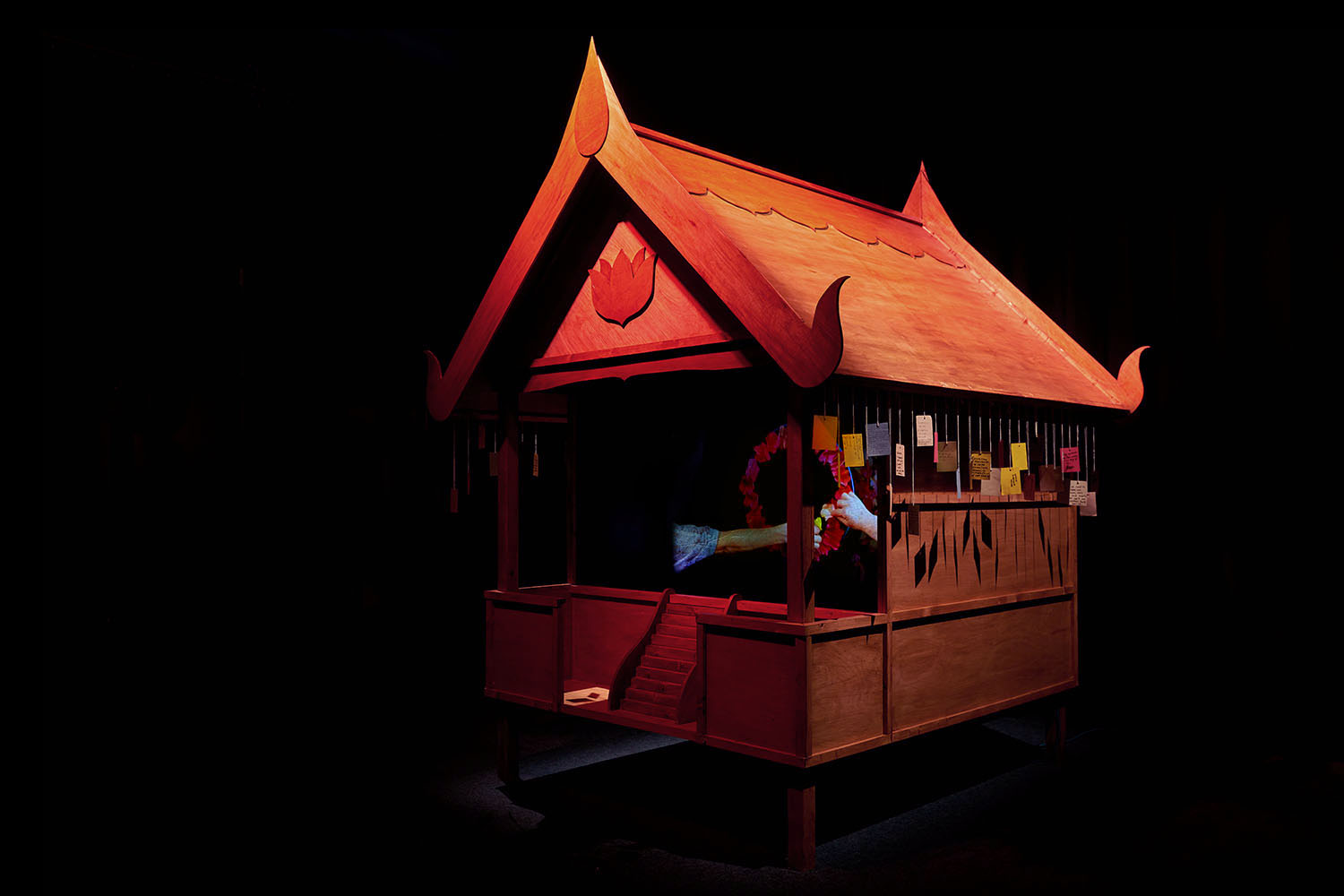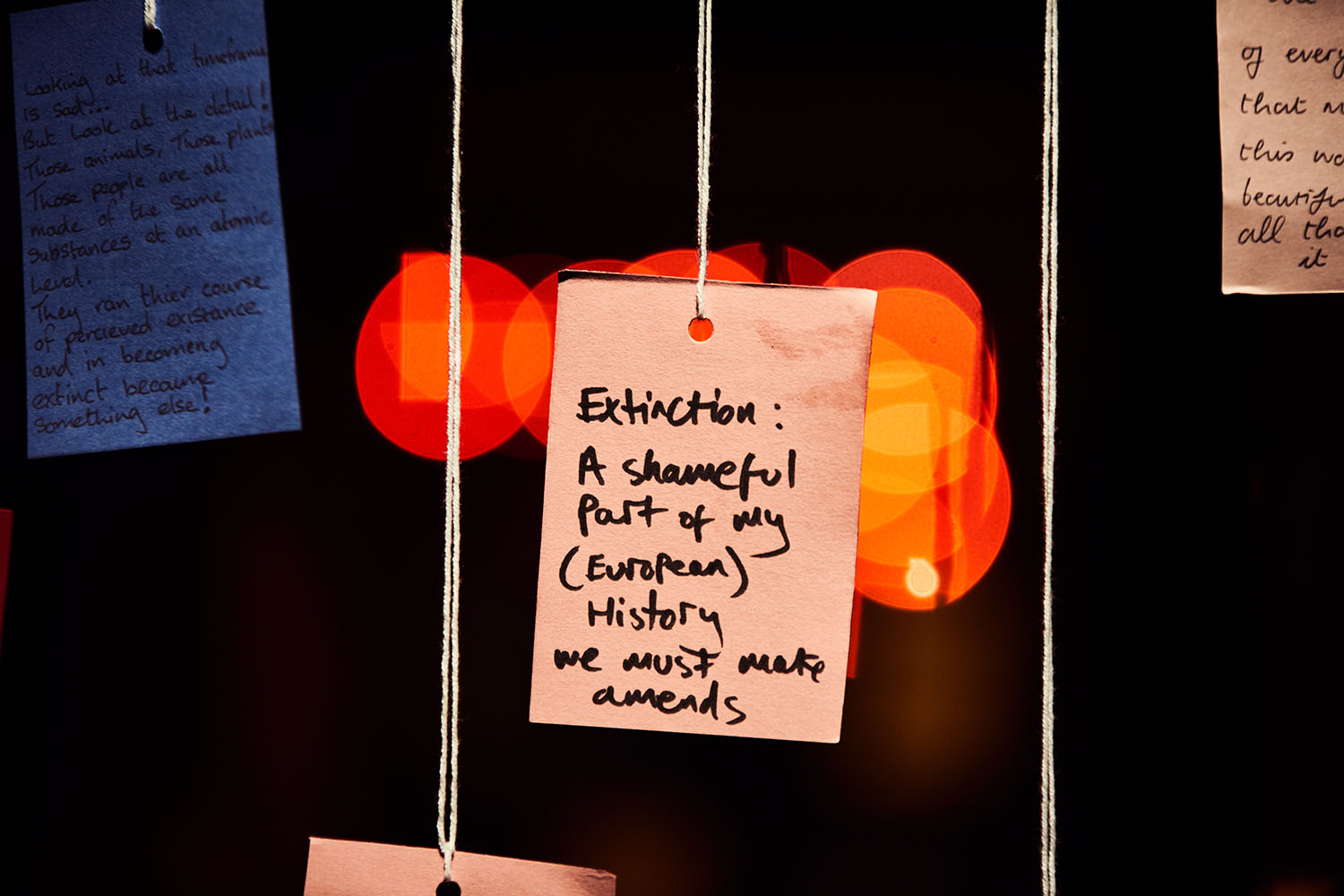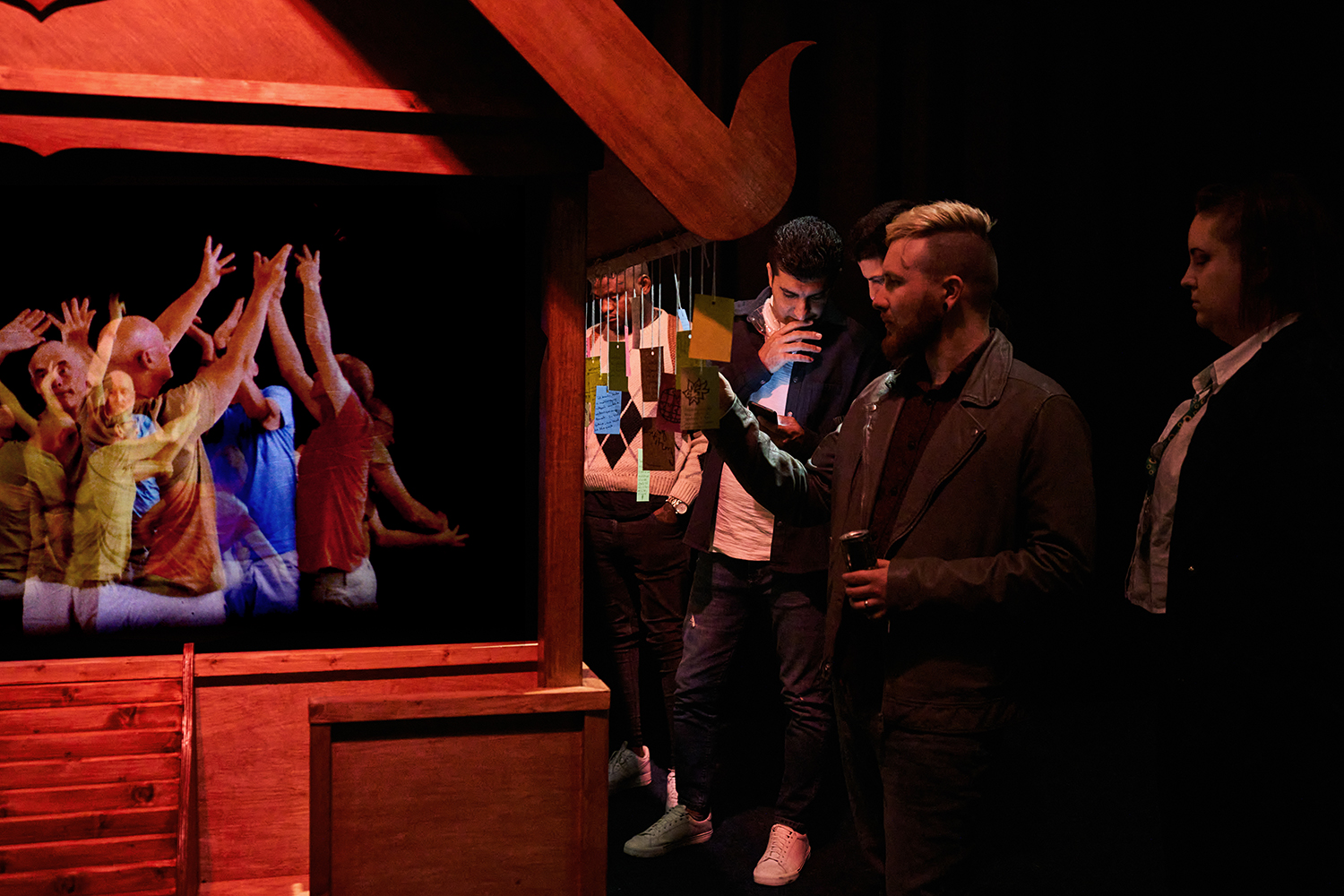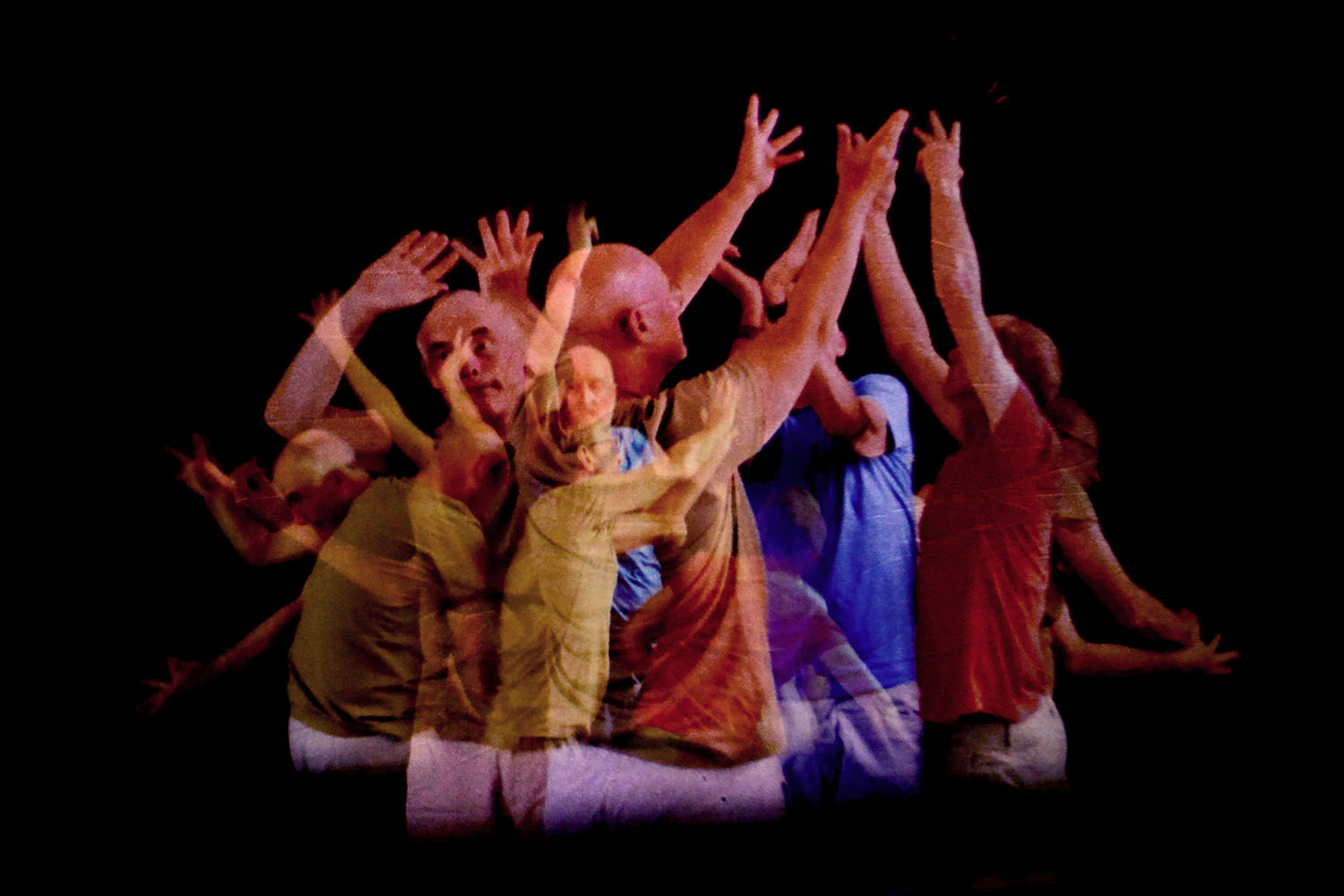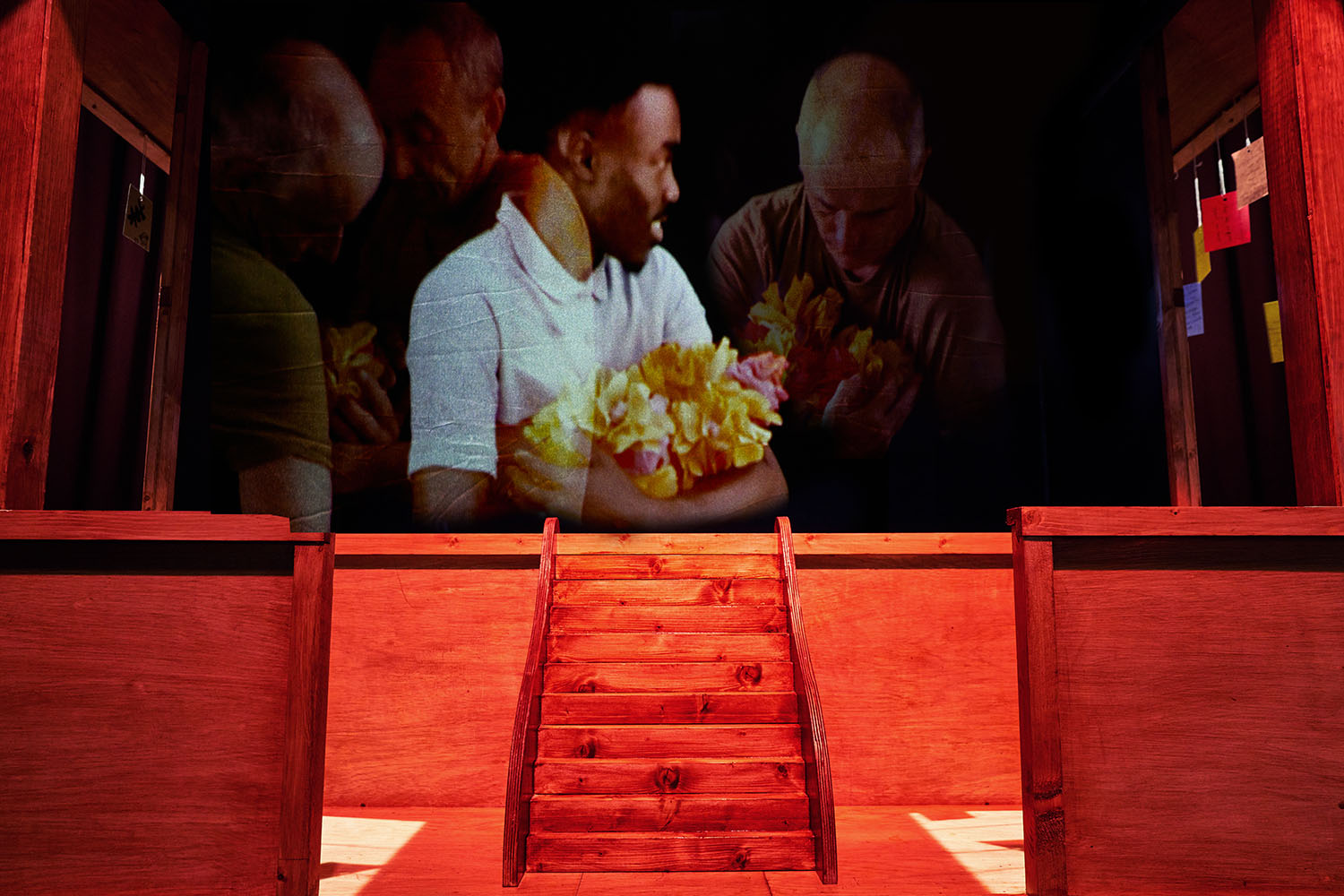Voicing Silence
Double holographic projections and soundtrack in Thai-inspired wooden structure.
Commissioned by the School of Philosophy, Religion and History of Science at the University of Leeds and funded by the Arts and Humanity Research Council (AHRC), with extra support from Halton Borough Council.
Extinction and loss of biodiversity: What does it mean to us, collectively and individually? What emotions does it evoke and which actions does it inspire? How do we make sense of this assault on diversity, languages, cultures, traditions, and ways of life? How do we care for and celebrate what we still have?
Lou Chapelle’s artwork Voicing Silence responded to these questions, engaging with artists and Global Majority groups through a series of model making, poetry, dance and singing sessions contributing to a final collective holographic video piece.
The double holographic video installation is presented within a structure inspired by a Thai village house, a place of shelter and protection. In the garden of these buildings, spirit houses of a similar style would be constructed to worship and show respect to the spirits of the land, in the hope of bringing blessings upon its residents, and avoiding misfortune. The Thai belief in providing shelter for spirits who inhabited the land before us is inspiring, offering new ways to think about today’s environmental issues and use of land and resources.
The work was designed and created by artist Lou Chapelle in collaboration with composer and choir leader Jennifer John, sound engineer and producer Dash, movement artist Kali Chandrasegaram, costume designer Rachael Prime, animator Laura Spark, poet Scott Farlow, film-maker Tim Brunsden, light and structure designer Mark Hilditch and project co-ordinator Louise Nulty.
I speak my language here; usually alone and unheard. My Bantu language is under threat at home across Hereroland and silent or misunderstood elsewhere. My people are declining. When we lose our mother language, we lose a part of ourselves.
‘Creating, Thinking and Feeling through Extinction’ research for Voicing Silence has been led by Dr Stefan Skrimshire, Associate Professor of Theology and Religious Studies at the University of Leeds, with the help of Dr Dominic O’Key, Leverhulme Fellow at Sheffield University.
Dr Stefan Skrimshire said “extinction so often conjures tragic images of iconic species from the past preserved as museum specimens. In this artwork we see it in people’s lives and struggles: something that is resisted, contested, that inspires rage and creativity as well as sorrow.”
We can love a place
and still be dangerous to it.
Beautiful collective actions
Cross- species kinship
Love
Co-existence
Cooperation
And celebration
Consideration
Of what we have.
.

